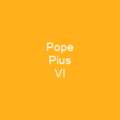What is a Papal Conclave and Why Does It Matter?
A papal conclave is more than just a gathering; it’s the heartbeat of the Catholic Church, where the College of Cardinals comes together to elect a new bishop of Rome. This process has evolved over centuries, reflecting the changing dynamics within the Church and society at large.
The Historical Context: From Clergy and Laity to Cardinals
Since the Apostolic Age, the election of bishops, including those in Rome, involved both clergy and laity. However, it was Pope Nicholas II who made a significant shift by decreeing that cardinals would elect a candidate after receiving assent from the clergy and laity. This decision marked a pivotal moment, as it shifted the power dynamics within the Church.
Reforms and Evolutions
The 1268-1271 period saw reforms aimed at preventing political interference. These changes led to the establishment of conclaves in the Sistine Chapel, ensuring a more structured and secretive process. Over time, procedures have been refined to ensure fairness and secrecy, with key milestones like the requirement for a two-thirds majority set by the Third Lateran Council in 1179.
The Role of Women and Lay Members
It’s worth noting that women are not eligible for the papacy due to the Church’s ban on female ordination. Historically, lay members were included in the Sacred College but this practice ended in 1899. Today, all cardinals must be priests, with bishops being a requirement since 1962.
Limitations and Numbers
The number of cardinals has fluctuated over time. Pope Sixtus V limited the number to 70 in 1587, while Paul VI capped it at 120 in 1975. These limits aim to ensure a manageable process for electing a new pope.
The Election Process: From Accessus to Scrutiny
Early methods of election included accessus (approach), acclamation, adoration, compromise, and scrutiny. The latter became the sole approved method after 1996 with the promulgation of Universi Dominici gregis. These procedures have evolved to prevent self-voting and ensure secrecy.
The Role of Emperors and Kings
In earlier times, emperors and kings wielded significant influence over papal elections. For instance, Emperor Honorius settled a controversial election in 418, while the Holy Roman Empire exerted control from the 9th century onwards. The Investiture Controversy led to the abolition of imperial interference by Pope Gregory VII.
The Conclave: A Secured Process
Once inside the Sistine Chapel, cardinals hear two sermons and take an oath before voting. The process is strictly controlled, with only a nurse allowed for ill cardinals. Voting comprises three phases: pre-scrutiny, scrutiny, and post-scrutiny. A two-thirds majority is required to elect a new pope.
The Final Steps
Once the election concludes, the cardinal dean asks if the pope-elect accepts his election. If he does, and is not already a bishop, he must be consecrated as one before assuming office. The new pope then chooses his regnal name and emerges to receive adoration from the crowd.

Conclusion
The papal conclave is a complex and fascinating process that has evolved over centuries. It remains a crucial moment in the life of the Catholic Church, symbolizing unity and continuity. As we look to the future, the conclave will continue to adapt, ensuring the Church’s leadership remains strong and relevant.
You want to know more about Papal conclave?
This page is based on the article Papal conclave published in Wikipedia (retrieved on January 16, 2025) and was automatically summarized using artificial intelligence.






